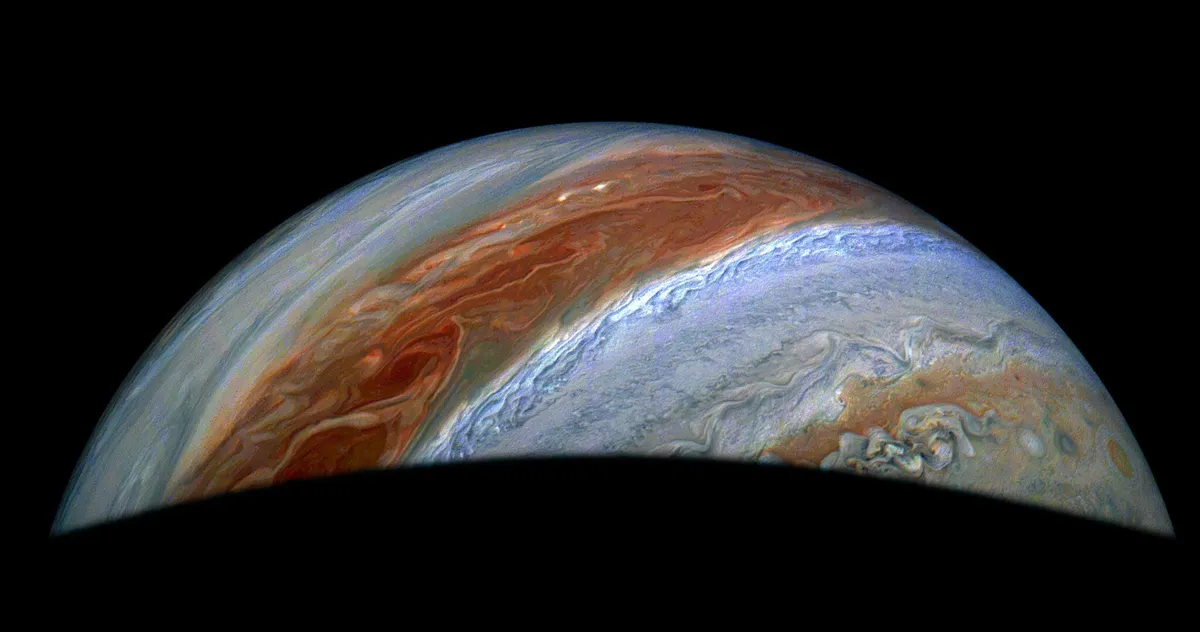
Recent findings from NASA's Juno mission have provided groundbreaking insights into the extreme weather patterns of Jupiter and the volcanic activity on its moon, Io. The data collected by the Juno orbiter reveals vital information about the gas giant's fierce winds, cyclones, and the unique geological characteristics of its most volcanic moon. These discoveries were presented during a news briefing at the European Geosciences Union General Assembly held in Vienna on April 29.
Jupiter is characterized by its extreme weather conditions, including gigantic polar cyclones that dwarf Australia, powerful jet streams, and intense radiation belts. Scott Bolton, the principal investigator of the Juno mission at the Southwest Research Institute, emphasized the immense energy present in the gas giant's atmosphere. "As Juno's orbit takes us to new regions of Jupiter's complex system, we're gaining a closer understanding of the vast energy dynamics at play," Bolton stated.
While Juno's microwave radiometer (MWR) was initially designed to investigate Jupiter's cloud tops, the team also directed this technology towards Io. Combining MWR data with the Jovian Infrared Auroral Mapper (JIRAM) data has allowed scientists to uncover remarkable findings about the moon. Shannon Brown, a Juno scientist at NASA's Jet Propulsion Laboratory, mentioned the surprise of discovering warm magma beneath Io's crust, with approximately 10% of the surface harboring remnants of slowly cooling lava. This insight could help scientists understand how Io renews its surface so rapidly and how heat transitions from its interior to the surface.
Io’s volcanoes and lava fields act efficiently like a car radiator, transporting heat from the moon's interior to its surface, according to Brown. The team also identified the most powerful eruption in Io's history, which was first observed during Juno's 2024 flyby and has continued to emit lava and ash as recently as March 2, 2023. Scientists anticipate further observations of this active volcano during Juno's upcoming flyby on May 6, 2023.
During its 53rd orbit on February 18, 2023, Juno initiated radio occultation experiments aimed at understanding the atmospheric temperature structure of Jupiter. This innovative technique involves transmitting a radio signal from Earth to Juno and back, allowing scientists to analyze the bending of radio waves to gather detailed information about the planet's atmospheric conditions. So far, Juno has completed 26 radio occultation soundings, including the first-ever temperature measurement of Jupiter's north polar stratospheric cap, which revealed it to be about 11°C cooler than surrounding areas.
Juno's recent findings have also shed light on the unique cyclones located in Jupiter's northern region. Unlike Earth's hurricanes, which typically occur in isolation, Jupiter's cyclones are confined to the polar regions. The study of years of data from JunoCam and JIRAM has allowed scientists to track the long-term movement of these massive cyclones and understand how they interact. The process known as beta drift causes these storms to drift toward the pole, influenced by the Coriolis force and their wind patterns.
Yohai Kaspi, a Juno co-investigator from the Weizmann Institute of Science, explained how Jupiter's cyclones cluster together as they approach the pole, slowing their motion and interacting with one another. This interaction stabilizes the cyclone configuration and causes them to oscillate around their central positions, moving slowly in a clockwise direction. The atmospheric model developed through Juno's observations not only enhances our understanding of Jupiter's cyclones but could also provide insights into cyclone behaviors on other planets, including Earth.
Bolton highlighted the significance of Juno's ever-changing orbit, which allows the spacecraft to explore new regions of Jupiter with each flyby. As the mission continues, scientists are excited to learn more about the harsh radiation belts surrounding Jupiter, providing valuable insights into one of the most extreme environments in our solar system. "It's a little scary, but we've built Juno like a tank," Bolton stated, underscoring the spacecraft's resilience as it bravely ventures into the unknown.